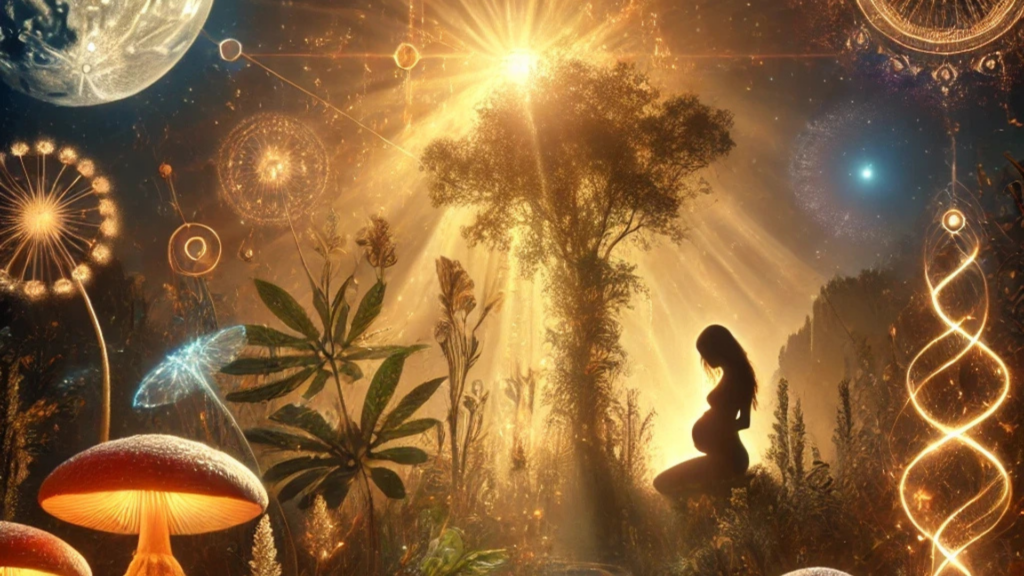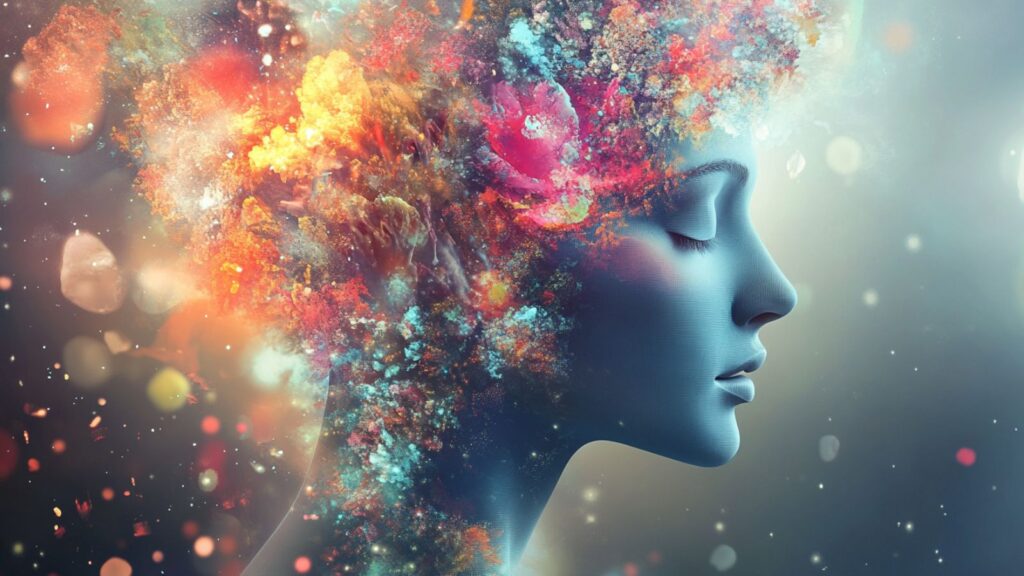The first time I heard Underworld’s album A Hundred Days Off, soon after its 2002 release, was magical. The British group’s diverse song selection evoked for me a visionary transcendence struck with romanticization of urban concrete echoes. It is still perhaps my favorite electronica record— an altogether different synthesis than the Moby or Tricky tunes I found among my father’s significant album collection while growing up.
Composition and live mixing of electronic music are interesting emblems of a technological age, their structured assimilation bursting with as much raw creative beauty as any medium. Electronica ranges with all manner of speeds from raw rhythmic minimalism to utter busyness of beats; looping samples and melodies that can astound with gorgeous nuance, or bore indifferent listeners with stale repetition. It is meticulously sequenced, affording myriad possibilities; calculated, yet allowing DJs to play to the house with a moment’s improvisational impulse.
The oldest phonograph recordings are under 140 years in age, the oldest records a bit over a century— radio has not even reached its one-hundredth birthday. Before these media arrived, one was lucky to hear a symphony twice in a lifetime; music was passed down at home, in church and by buskers in the streets. Now, recorded music is quite a popular drug. In the past fifteen years of a new millennium, I have seen online comparisons of playlists that are months, even years in length. Just as one lifetime cannot see all sights coloring the world, there isn’t enough time to hear but a drop of the music ever composed. And that’s probably fine with most people. Personally, I don’t want to hear Eric Clapton’s “Wonderful Tonight” drone on ever again.
In an age of multiplicity, the vast spectrum of music almost begs the novelty that DJs use songs themselves as instruments. In a sense, DJs— whether or not they produce their own tunes— make new art out of taste itself. Taking in and weaving influences anew like some wise digital puppet master, the DJ has been characterized as a kind of ‘technoshaman.’
Analogies of ‘life as remix’ are familiar beyond the new age to the new edge, and highly relevant to prospects of a sustainable planetary culture that rearranges existing resources instead of abstracting profits from endlessly ‘new’ products. No idea or creation is purely original, and every action molds that which already is. There is a completely interwoven relationship between creating something new and fashioning out of what already exists.
Lead
A few years ago, I noticed a pattern of individuals born during the sun sign of Capricorn becoming famous DJs. Names such as Tiesto, Armin van Buuren, Skrillex and deadmau5 occurred to me, as well as personal favorites like Nicolas Jaar, Robert Babicz (“never a DJ”), John Digweed and Thomas Bangalter of Daft Punk. I recently found this earthy pattern to be stronger than ever, and so immersed myself in characteristically ravenous investigation.
The resulting insights are compelling whether or not you enjoy electronic music (dig beyond the big names), and certainly if you find yourself skeptical of astrology’s empiricism in spheres of life both imaginal and material. Nearly half the world’s fifteen biggest DJs were born under the same sign, and while I will emphasize archetypes of Capricorn, the data taken from DJ Mag’s Top 100 DJs of 2013 reveals a pattern which focuses and goes beyond this. Water and earth signs of the zodiac— yin types, whose introverted energies might lean more toward ‘taking in’ than ‘sending out’— reach fame more often than their extroverted, yang, fire and air counterparts. Chart-topping popularity is rather mundane, but these instinctual expressions are telling in such concentration.
Astrology moves through the flame and fluidity of archetypes— active images. Astrological symbols and planetary aspects are spectrum and proximity, not matters of cookie-cutter determinism. Statistics and hard science will never do justice to the art of astrology like singing the stories of a natal chart, yet they are nonetheless fascinating and sometimes even helpful in nudging skeptics to participate with a symbolic attitude.
The findings of Michel and Francoise Gauqelin are perhaps the most exceptional scientific research in these fields. As Geoffrey Cornelius mentions in The Moment of Astrology, this couple demonstrated in thousands of European birth times highly significant correlations between planets in the diurnal cycle at birth, and career and temperament— Saturn and the scientist, Mars and solo athletes and so on. Seeing astrology at work, from the imaginal realms to visceral expression in creative calling and vocation, can help us understand archetypes in a hands-on way.
Renew, Anew
It is unlikely that an individual does much more sending out or taking in, for we all relate to the psyche’s fundamental active-passive duality. It’s also unlikely that significantly more DJs in the world were born during water or earth signs than fire or air. Many of the Pittsburgh DJs and producers I’m friends with or otherwise enjoy— Nice Nate, Shisa, Doverspike, Cryoverb, Cypher— happen to be fire and air signs. (Head nod to yin signs like James Gyre, Headphone Activist and Ninja Papes.) What’s more, it goes without saying to a student of astrology or psychology that every individual’s birth chart or complex is an admixture of yin and yang energies.
Just because one is born with a yang, “masculine” sun sign does not mean she identifies with such energies more than their yin compliments. Biological sex, gender identification, upbringing and environment throughout life serve to shape the total unfoldment of an individual, as do the placement of all celestial bodies in a natal chart— not only the Sun. Yet with DJs and sun signs we might see a clear parallel between the yang of creating something new, and the yin of ‘mixing’ from what already is. The astrologer Adam Elenbaas observed in his April 7, 2014 horoscope that the word “make” generally means to “fashion from things already existing,” whereas the word “create” often carries with it “ex nihilo” or “out of nothing” or “out of nowhere.”
Both yang and yin components— of a person, of a birth chart— seek to experience self differently, in mutual compliment. The yang, fire and air parts of us might seek more to individuate— make known our inherent specialness and individuality— in gesture toward or contrast to society as a whole. The solar nature of fiery and airy iconoclasm will shock and go against the grain as often as it pleases. The yin, water and earth parts of us might seek more to individuate through enmeshed relationship— to merge with the whole or refine our relationship in service to it.
These expressions form no definitional “either/or” across the types, but rather different concentrations of “both/and.” An extroverted, upward energy like airy Gemini might show as much sensitivity to environment as a yin sign. Similarly yang, fiery Leo might be as concerned with and desirous of pleasing others as water and earth.
The prevalence of water and earth signs in DJ Mag’s poll results does not imply they are better at DJing than their elemental counterparts. One could easily argue against this based on the lack of experimental depth characteristic of many major artists, and the safety (or downright corniness) of track selection common among popular DJs. I happen to have no interest in most of the artists who made the Top 100 DJs of 2013, or any other year.
The vision, playfulness and technological tinkering of fire and air have as much to do with mixing as yin energy does. Nonetheless, yin signs rising to peak fame in electronic music suggests certain flavors of receptivity and discrimination. Sensitivity and even conformity to what an audience desires might characterize these types to a greater degree. These watery and earthy folks naturally orient themselves around the reception and selection that inform their sending out— taking in and weaving anew.
I will delve into astrological data that shows different balances on life’s polarity playground, focusing specifically on the six zodiacal yin signs as reflected in the art of DJing. But before this, let’s explore some core aspects of astropsychology.
Fundamentals
Zodiac signs are different than the constellations from which they take their names, and there are infinite zodiacs depending on what you want to measure. The sidereal system, common with Vedic astrology, uses the actual constellations or “fixed stars” (any star but the Sun) whose positions in the night sky do not seem to change in relation to each other but slowly, due to the precession of the equinoxes, all drift backward from the tropical zodiac’s seasonal markers by about 1.4 degrees per century.
Tropical astrology, popular in the West, uses twelve signs or unchanging 30° divisions of the ecliptic— Earth’s 360° / 365-day orbit around the Sun. These begin around the 21st of each month as they are marked by the Vernal equinox, the Summer solstice, the Autumnal equinox and the Winter solstice. While the tropical system is thus most applicable to temperate regions of the northern hemisphere, different archetypal instincts mapped out by any astrology are global, if not universal.
The word ‘planet’ means wanderer, and with astrology this includes the Sun and Moon as ‘luminaries.’ Sun sign shifts as Earth revolves around the Sun, Moon sign as our satellite revolves around Earth, yin and yang alternating in earthly concentration. For a planet or celestial body to be “in a sign” from Earth’s orbital perspective, they align with slices of the sky and, as composer and humanistic astrologer Dane Rudhyar expressed, “act as a focusing lens through which pour day in and day out the energies of cosmic space.”
Any perceived ‘oneness’ is seen in the many. The origins of Jung’s ‘fourness’ are the four alchemical elements: fire-intuition, earth-sensation, air-thinking and water-feeling. Whether or not they are equivalent, both sets are expressions of fourness, in the same way that light-dark and yang-yin are expressions of ‘twoness’— duality. As wanderers orbit our star, they uphold the pillars of the world psyche in different concentrations. With these encirclements, pantheons of archetypes are expressed. Planets’ orbits could be like many spinning records, synchronizing with seeming harmony and dissonance, all of it sound, all sound as music.
Data
As for DJ Mag’s Top 100 DJs of 2013, there are 134 individuals across the hundred acts. I could not find the birth dates of 44. Working with 90 birth dates of 134 people isn’t a great statistic, so we will cover fewer than these 100 acts— the top 15 and top 50, across which a greater majority of birthdays are readily available. I will emphasize only sun sign, due to a ubiquitous lack of available birth times necessary for full natal charts. What’s more, sun sign is sufficient to demonstrate the yin energy exhibited in the primary solar complexes of these musicians.
Of the top 15 acts (comprising 19 individuals), I found sixteen birth dates— eight of which are in the cardinal earth sign, Capricorn. Hardwell ranked #1, Armin van Buuren #2, Tiesto #4, Nicky Romero #7, Skrillex #11, deadmau5 #12, Wardt van der Harst (of W&W) #12, and Calvin Harris #15.
That’s a pretty massive statistic: nearly half the world’s top fifteen DJ acts were born under the same sign. Of the rest there is one Gemini, two Cancer, two Virgo, one Scorpio and one Sagittarius; only Gem and Sag are yang signs. Not only were half of the sixteen available birth dates Capricorn, fourteen of them fall in just six zodiac signs: the yin water and earth complexes. In fact, of the nine DJs who won the poll between its 1997 inception and 2013, seven are yin signs— four Capricorn, two Virgo, one Scorpio. Two of the Capricorns have dominated three years in a row. Solar complexes in yang signs account for just three wins across those seventeen years.
The next thirty-five acts (#16-50) have a net count of forty-four individuals with thirty-three available birth dates. This gap in available data is unacceptable, but some inferences can be made. Of these thirty-three, there are five Taurus, four Gemini, three Cancer, one Leo, three Virgo, four Scorpio, two Libra, four Sagittarius, one Capricorn, two Aquarius and four Pisces. Twenty in water and earth signs. That makes sixty-three individuals and forty-nine available birth dates across the top 50 acts, with thirty-five of them falling in the six water and earth signs. If all fourteen of the birth dates I did not obtain were fire and air, the pattern would still display a definite leaning toward water and earth— a near shutout with the top 15.
Synthesis
Still, the statistics don’t really matter. A concentration of yin signs across the world’s top DJs is no more causal a phenomenon than the prevalence of air signs among America’s most popular rappers. No matter how clear the archetypal correspondences, symbols cluster together through a broader principle than mere cause-and-effect. The past eleven-hundred years of Japanese emperors show a definite leaning toward the yin Cancer-Capricorn axis and a cultural skill at improving what already is. Beyond such inclinations— rearranging, refining, remixing— what is it about yin instincts that breeds a successful DJ?
Archetypes like the curator are a start. Taurus’ love of beauty and pleasure within an arm’s reach; Virgo’s mercurial electricity and discriminating selectivity; Capricorn’s refinement and control. Cancer as ‘mother weaver’ and emotional organizer; Scorpio as conjured depths; Pisces as poetic life-mixer.
Even the shyest DJ’s ability to make thousands of people move while head down, buried in tech, is well suited to yin flavors of passive dominance. To some extent, producing electronic music means command of all instruments, a control well suited to Capricorn and Scorpio instincts. It’s no surprise to some that the same Capricorns, Scorpios and other chart-topping yin signs also earn the most, scaling that proverbial mountain. The song and album titles of English DJ John Digweed, a notably shy but solid Capricorn with a Virgo moon, are riddled with saturnian vibes like “Gridlock”, “Forge”, and “Structures.” Adjusting or omitting what doesn’t fit one’s vision— an art of ‘leaving out’, like scenes cut from a film— comes naturally to these folks.
Life as remix, playing and rearranging, scaling mountains. The art of mixing and recycling music provides a valuable metaphor. Might it help us be good stewards and keep planetary resources in check?















